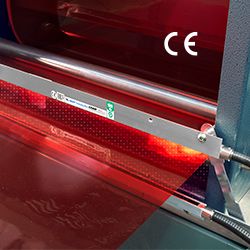Focus your 2023 Technology Investments on Unearthing New Value
.jpg)
Technology investment tops the five trends to watch in Deloitte’s 2023 manufacturing industry outlook. The report puts research behind what most already assume to be true, that digital strategies will be leveraged to maintain momentum and protect long-term profitability as economic and geopolitical prospects remain uncertain. But investments never guarantee returns. We all know that many of the 60% who say they are focusing on data analytics in 2023 will fail to capture their desired gains because, let’s face it, their 2023 approach won’t be drastically different from 2020 (or 2016, or…). Perhaps this is a concern in your own organization. So why try again?
We’ll try again because the pressure to improve performance is ever-present and increasing. So rather than ask “why try?”, we should be asking “how do we succeed?”. How will you differentiate your technology investments in 2023 to reveal value that you couldn’t uncover in the past? One of the most interesting answers is also unattractive - you should dig. More precisely, you should deploy technology to mine.
We’re not talking about physical mining, though there is plenty of value in lithium. Organizations can deploy digital mining to tap the informational goldmines that already exist in their servers. Whether you know it or not, your enterprise systems are generating loads of information that IT is most likely archiving and/or deleting to save space. IT is not to blame for ignoring, storing, or destroying this information because few realized the potential in this data and even fewer knew how to extract value from it. But that number is growing through SaaS offerings that have productized the potential.
These SaaS offerings fit in a technology group called process mining. It varies from data mining and big data, which attempt to glean information from the 1s and 0s inside databases. Applying statistical analysis and machine learning through big data techniques isn’t a bad thing to do, but most organizations have already tried it. You should be skeptical about how much additional juice you can squeeze from putting new KPIs around the same processes.
The need for better results means we have to disrupt existing methods - this is where process mining comes in. Rather than focusing on what your systems produce (data), process mining creates insights from how your systems are being used (logs). If you’re unfamiliar with log files this analogy may help (apologies for those who are familiar, hopefully the Star Trek reference keeps you engaged): IT system logs are like Kirk’s captain’s logs because they provide context to the Enterprise’s journey, more than just the date and destination. Logs have existed in IT systems for decades but were not commercially attractive until machine learning gained maturity. Process mining leverages advanced technology to visualize the digital breadcrumbs that logfiles leave.
Seeing how your business activities actually flow in a process mining platform opens doors to continuous improvement you couldn’t dream of by simply reviewing aggregate outcomes through KPIs and data analytics. Let’s dive into an example. Say your organization went through tremendous pains to promise shipment of in-stock goods within 24 hours of confirmation. You’ve consistently delivered with a 95% success rate over 3 months, congratulations! Since KPIs are green, you have no indication that anything could be better. Insert process mining: monitor the log files underlying your shipment preparation process for three weeks and uncover a repetitive step in order confirmation that frequently takes more than two hours to complete. Now you have a technology that has discovered a bottleneck and can provide active monitoring for you to achieve 100% success on your 24-hour promise.
Certain process mining companies go a step further into process intelligence by applying artificial intelligence to simulate the impact of changes, thus enhancing your flows. That two-hour+ order confirmation step might be simulated down to 30 minutes. Now you have an opportunity to offer same-day shipping on orders received before 9:30am and gain a new competitive advantage through evolving from meeting to beating industry benchmarks.
Shipping is just one example of a business flow that can be transformed by process mining and process intelligence. Every department has multi-step processes. Imagine the benefits your finance department would have from more free and accurate cash flow if accounts payable and accounts receivable could visualize every step (and roadblock) and get active alerts on deviations. Then add customer service and purchasing to the list of beneficiaries.
The case for process mining technology and process intelligence solutions is becoming more clear by the day. Where should you start? There are arguably three camps of process mining companies that you’ll find on the market (listed providers are examples, not endorsements): best-of-breed (like Celonis), business system companions (like SAP Signavio and QAD Process Intelligence), and business automation/RPA companions (like UiPath and Pegasystems). Each camp and individual vendor has benefits and drawbacks. If you are already using one of the business systems that have acquired process intelligence companies (like SAP or QAD), there is a good likelihood that you’ll get fast results from pre-defined scenarios mapped to their offerings. Otherwise, weigh the pros and cons of leading vendors with appropriate consideration given to case studies they offer in industries and scenarios close to your business.
In 2023 and beyond, enterprises should be investigating which technologies to explore for growth rather than wondering if they should invest at all.
Process mining and process intelligence solutions offer unique opportunities because they can transform the mountains of log files that your existing systems generate into goldmines for continuous improvement. They have the potential to deliver impressive ROI in a diverse set of business processes. As practical applications of ML and AI, process mining solutions are more than a check-the-box offering for good PR, they’re digital transformation finally delivered.
Comments (0)
This post does not have any comments. Be the first to leave a comment below.
Featured Product

